Induction and glass-ceramic hob - differences and comparison. As well as the principle of operation, the pros and cons
In the kitchen equipment market, you can find glass-ceramic and induction electric stoves. An overview of the models will help you figure out which device is more suitable.
When choosing a new stove, each buyer wonders which model is better to buy: a simpler electrical device with a glass-ceramic surface or an improved induction-type gadget.
Although in their appearance and dimensions, the structures are very similar, each unit has its own positive and negative qualitieswhich could be decisive.
To choose the best option, it is worth comparing modern models of stoves, learning about their principle of operation, features and key advantages.
The principle of operation and features of glass-ceramic plates
Unlike conventional electrical devices, glass-ceramic devices have a perfectly smooth mirror surface, which has increased strength and the ability to withstand impacts of any force.
The principle of operation of such a device is similar to the mechanism of action of a classic stove with cast-iron burners.

After that, heat passes from it through the glass-ceramic surface, heating the dishes installed on the surface.
Additionally, halogen burners with heat-generating bulbs are mounted in glass-ceramic appliances, which are heated by a fused tape.
Main Features electric stoves with glass-ceramic surface experts call:
- slow heating and fast cooling;
- heating dishes, not the surrounding space;
- cooking various dishes in dishes of various shapes;
- variable heating zone;
- the presence of automatic boiling;
- kitchen interior transformation.
The principle of operation and features of induction cookers
In this way, during the operation of the coils located under the hob, the dishes are heated, which contains a certain amount of ferromagnetic particles.
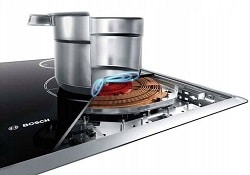
Having opted for induction equipment, it is important to remember that for cooking you will have to purchase special dishes or an adapter that allows you to quickly and evenly heat kitchen utensils.
Among features of induction equipment items such as:
- heating due to coils generating electromagnetic radiation;
- surface operation only with dishes installed on it;
- instant change in temperature conditions to the desired mark;
- absence of unpleasant odors in the kitchen;
- automation of most processes;
- high energy efficiency class.
Advantages and disadvantages of models
- the ability to withstand heat up to 600 degrees;
- self-adjustment and selection of the optimal temperature for cooking a particular dish;
- many options for convenient use, including a timer and several cooking modes;
the possibility of using a variety of dishes that do not have ferromagnetic properties;
- affordable cost and no need for special maintenance.
The main disadvantage electric glass-ceramic stoves is the need for thorough, but gentle cleaning with the help of special tools and detergents with a certain chemical composition.
Otherwise, micro-scratches will begin to appear on the hob.
- high cooking speed due to the rapid heating of the dishes, and not the entire hob;
- a reliable security system that includes the function of automatically turning the device on and off when installing the dishes and removing them from the electric burner;
- easy cleaning of the surface from dirt - it is enough to wipe the areas with a soft sponge, since fat and food do not burn;
- instant temperature change with an accuracy of a degree using an intuitive control panel;
wide functionality that greatly simplifies the operation process and saves time;
- economical consumption of electricity.
disadvantages induction hob users call the need to select suitable dishes and the high cost of equipment.
In addition, difficulties may arise with the installation of the device - it cannot be placed next to a washing machine or dishwasher, since such a neighborhood can have an extremely negative effect on the operation of other units.
Comparative characteristics and differences
In order not to make a mistake in choosing a device, you need to pay special attention to the main technical parameters and differences between glass-ceramic and induction models.
It is most convenient to make a comparison and see what the difference is with the help of a small table.
| Characteristics | glass ceramic hob | Induction cooker |
| Heating rate | The installed cookware heats up within a couple of minutes. | Cookware heats up in just a few seconds |
| Tableware | The ability to use dishes of completely different shapes without mechanical damage | Using exclusively dishes with ferromagnetic properties and a perfectly smooth bottom |
| Control | Predominantly mechanical activation and regulation, but there is also a touch | Automatic switch-on and convenient touch control |
| Safety | There is a small chance of getting burned, but the unit is safer than gas counterparts | The device is absolutely safe for small children and animals, but is not recommended for use by people with pacemakers. |
| Economy | Increased electricity consumption | Low power consumption |
| cleansing | Regular cleaning is carried out without much difficulty, but difficult dirt and old stains are removed worse | Dirt can be easily removed with a soft sponge and non-abrasive detergent. |
| Noise | Working with reduced audio level | Possibly a quiet hum |
| efficiency | 60% | 90% |
Which model is better to choose?
Wanting to purchase budget equipment that will be easy and convenient to work with, experts advise to stay on the glass-ceramic model.
Nonetheless, if the buyer wants to save time and effort, it is better to purchase an induction type stove.
The unit will cost more, but thanks to the automatic temperature control of the burners and an impressive list of useful options, the user will enjoy working.
TOP 3 best glass-ceramic stoves
#1
Gorenje EC 5121 WG-B
An ultra-modern device that lovers of delicious homemade dishes cannot do without.
Glass-ceramic electric hob with a spacious oven, which the user does not have to manually clean from dirt.
To eliminate the unit from drips, you will need to press the button - the internal space will be automatically cleaned with hot steam.
A large work area with conveniently located burners will allow you to cook a large number of dishes without spending a lot of time.
Specifications:
- work surface material – glass-ceramic;
- rated power consumption - 8.6 kW;
- control - mechanical;
- switches - rotary;
- dimensions - 50x60x85 cm.
Advantages
- the presence of a spacious drawer for dishes;
- elementary control panel;
- concise and elegant design;
- the presence of an electric grill;
- instant heating of dishes.
Flaws
- The model does not include a lid.
- the cost is slightly higher than similar models;
- equipment may be difficult to connect.
#2
Hansa FCCW53000
A premium model that stands out for its ease of use and high level of security.
An attractive electric stove that successfully combines modern design, high power and durability.
The appliance is equipped with residual heat indicators, a spacious drawer for storing dishes and 4 smooth burners that are easy to clean.
For comfortable and fast cooking, the unit is complemented by ergonomic rotary switches.
Specifications:
- work surface material – glass-ceramic;
- rated power consumption - 7.8 kW;
- control - mechanical;
- switches - rotary;
- dimensions - 50x60x85 cm.
Advantages
- high level of security;
- ease of cleaning;
- a large number of electric burners;
- affordable price;
- silent operation.
Flaws
- power cord must be purchased separately;
- the device does not have a display;
- no countdown timer.
#3
Electrolux EKC 952903 X
High power generating set, aimed at continuous and trouble-free operation.
Spectacular full-size stove with electric grill, small display and timer, equipped with four electric burners.
Despite its size, the design does not look bulky at all and perfectly complements any kitchen interior.
For convenient control over the process of preparing various dishes, the electrical device is supplemented with illumination of the internal space.
Specifications:
- work surface material – glass-ceramic;
- rated power consumption - 8.31 kW;
- control - mechanical;
- switches - rotary;
- dimensions - 50x60x85 cm.
Advantages
- the presence of an innovative double-circuit burner;
- convenient rotary switches;
- work with a low level of sound power;
- rapid heating of the installed dishes and their contents;
- saving kitchen space.
Flaws
- slight chemical smell upon first use;
- the inability to fix the door in a certain position;
- the design requires careful and delicate cleaning.
TOP 3 best induction cookers
#1
Beko FSM 69300 GXT
Durable and safe to use design, ideal for installation in a large kitchen.
Freestanding 4-burner induction hob with 8 cooking modes, oven door with 3 glass panes, and an enameled inner lining of the chamber, which is very easy to clean from dirt.
The design is complemented by an electric grill, residual heat indicators to determine the surface temperature and a special program for uniform roasting of pieces.
Specifications:
- work surface material – glass-ceramic;
- rated power consumption - 9.6 kW;
- control - electronic;
- switches - recessed;
- dimensions - 60x60x85 cm.
Advantages
- bright illumination of the interior space;
- large volume of the oven;
- opening the door without effort;
- pleasant and stylish appearance;
- optimal number of heating zones.
Flaws
- slight specific smell;
- noisy operation of electric burners at maximum power;
- the impossibility of fixing the door.
#2
GEFEST 6570-04
An advanced gadget that will become an excellent kitchen assistant in creating real culinary masterpieces.
Induction hob with four powerful heating zones, equipped with residual heat indicators for safe use and avoiding the possibility of burns.
The device is equipped with an automatic safety shutdown function and a child lock for the electronic control panel.
In the presence of a box for dishes.
Specifications:
- work surface material – glass-ceramic;
- rated power consumption - 10.3 kW;
- control - electronic;
- switches - touch;
- dimensions - 60x60x85 cm.
Advantages
- accelerated heating of dishes and contents;
- the presence of removable wire guides;
- double illumination of the interior space;
- adjustable legs;
- spit with electric drive.
Flaws
- the hob is subject to the rapid appearance of scratches;
- built-in clock does not work in sleep mode;
- plug is not included in delivery.
#3
Electrolux EKI 954901 X
An easy-to-use device equipped with all the functions and programs necessary for comfortable work.
Electric stove with induction hob and powerful oven equipped with a cooling fan and bright lighting.
For compact storage of kitchen utensils, the device is equipped with a capacious utility compartment.
The uniform distribution of hot air throughout the chamber ensures the presence of a convector.
Specifications:
- work surface material – glass-ceramic;
- rated power consumption - 9.9 kW;
- control - mechanical;
- switches - rotary;
- dimensions - 50x60x85 cm.
Advantages
- instant response to user commands;
- economical energy consumption;
- uniform distribution of hot air;
- steam cooking;
- interesting design.
Flaws
- high price;
- noisy operation of the cooling fan;
- the appearance of scratches on the cooking surface.
conclusions
When choosing between an electric glass-ceramic stove and an advanced induction type device, you need to remember about the following details:
- glass-ceramic aggregates low cost, intuitive operation and low sound power operation;
- induction models are safer easy to operate and maintain, they have a wide range of functions, but are more expensive;
- main selection criteria are options such as power consumption, type of control and equipment dimensions;
- special attention should be paid to the security system, which will allow you to safely use the appliance.
Useful video
From this video you will learn which stove is better to choose - induction or electric:


 the possibility of using a variety of dishes that do not have ferromagnetic properties;
the possibility of using a variety of dishes that do not have ferromagnetic properties;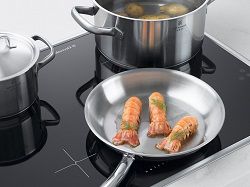 wide functionality that greatly simplifies the operation process and saves time;
wide functionality that greatly simplifies the operation process and saves time;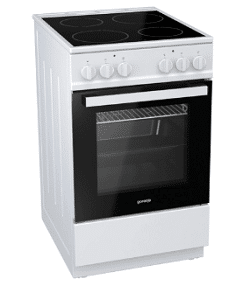
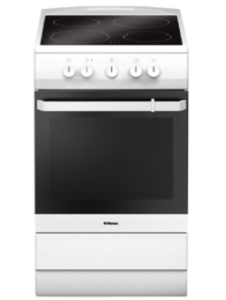
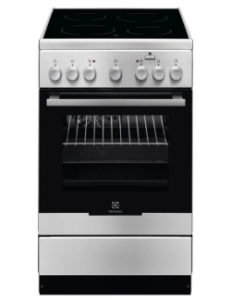
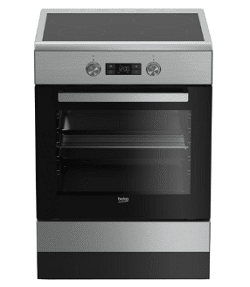
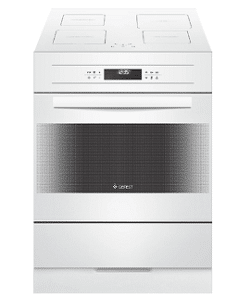
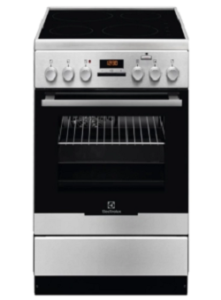
I expected to see at least one Hotpoint-ariston model, it seems like the company has established itself, but you missed
Yes, indeed, the company is good, it’s just that very few models have been collected in this article, since the main message of the material is a comparison. Check out our individual hobs rating articles for more models.